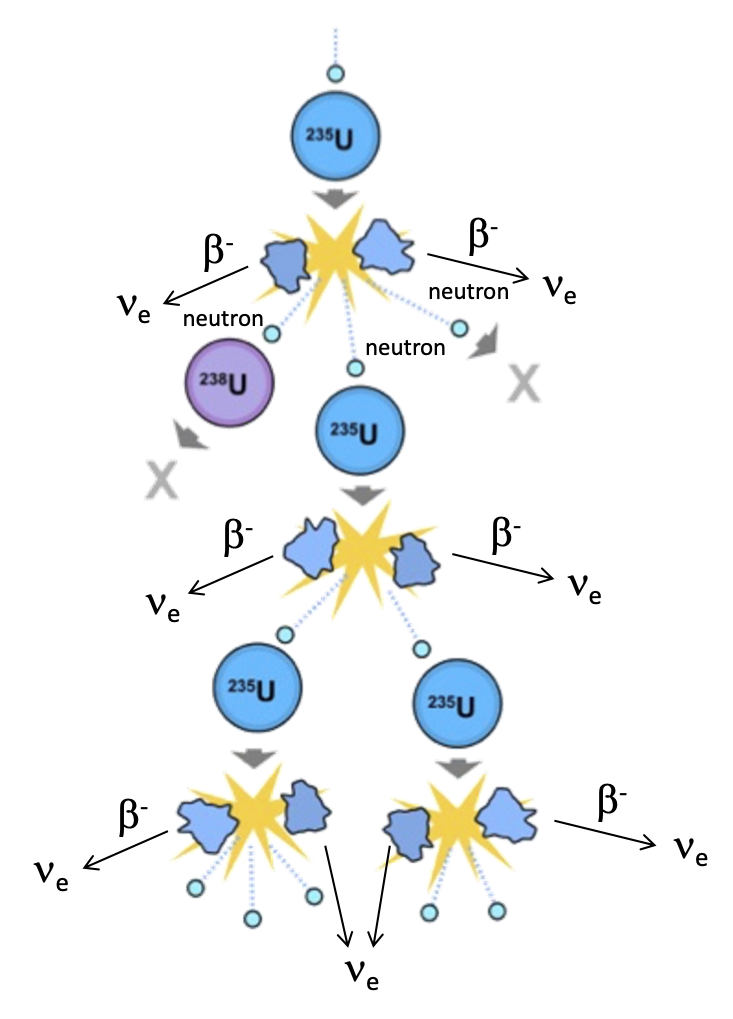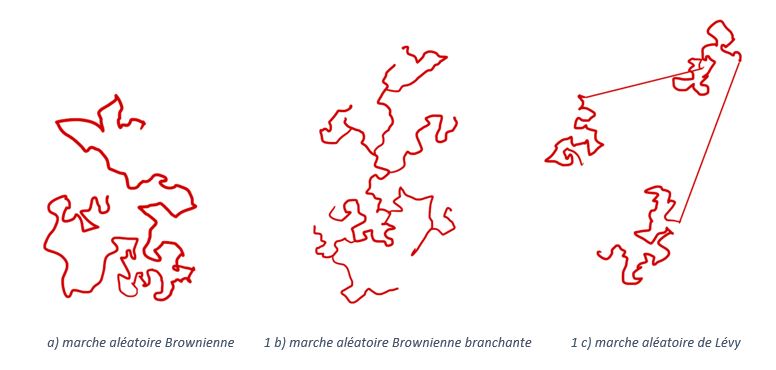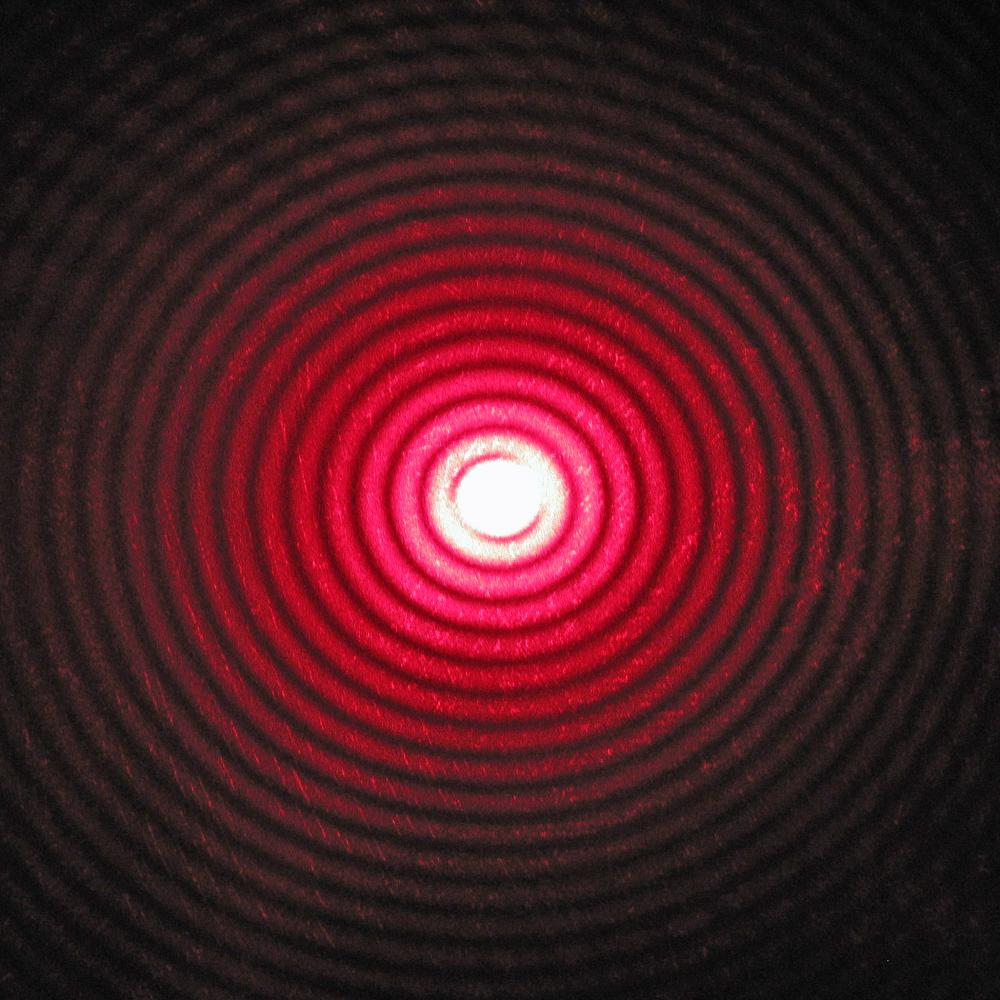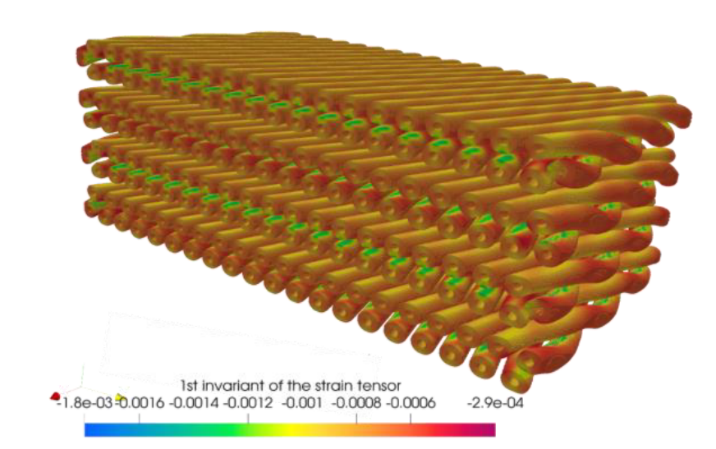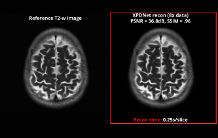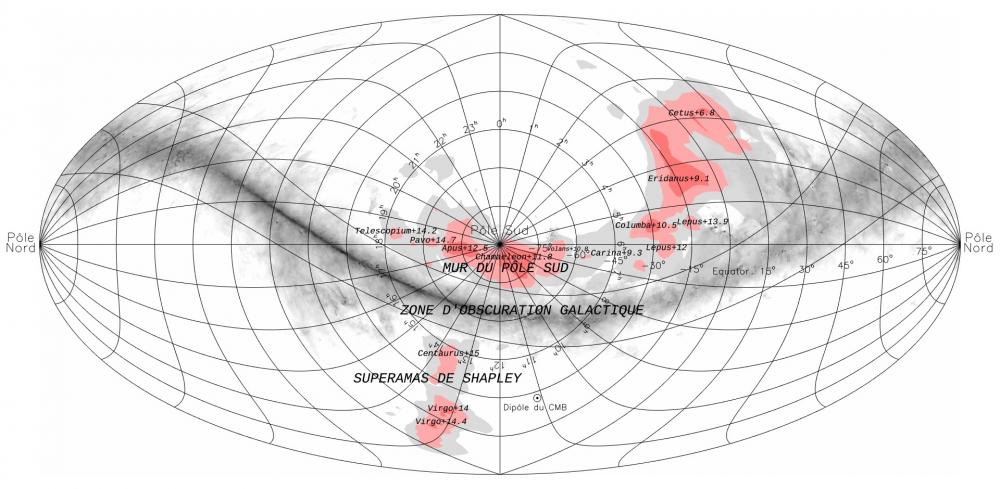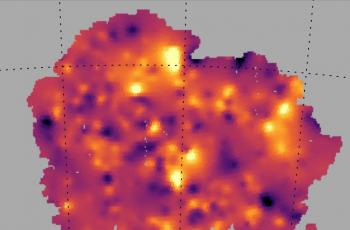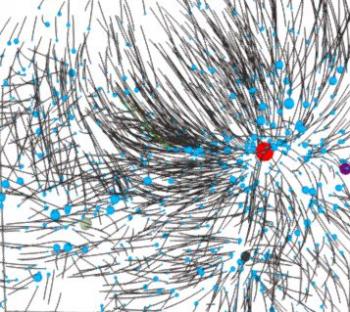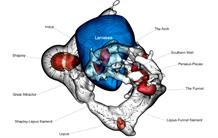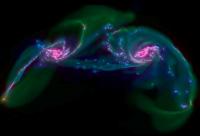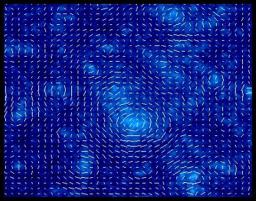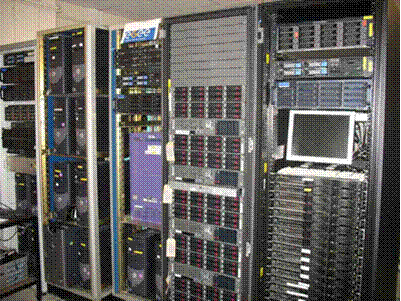Supported by CEA's "digital simulation" cross-disciplinary program, Irfu, the Laboratoire National Henri Becquerel of DRT and the Service d'Étude des Réacteurs et de Mathématiques Appliquées of DES teamed up to carry out a thorough review of calculations of antineutrino spectra from nuclear reactors. A complete revision of the summation method lays a new and solid foundations for these calculations, and was featured as the Physical Review C journal editor’s suggestion [1] on November 27, 2023. This revision incorporates numerous improvements in the beta decay modeling of the thousands of branches making up a reactor antineutrino spectrum, and in the use of nuclear evaluated data. It also quantifies all the systematic effects known to influence the calculations, providing for the first time a complete uncertainty model. This major advance now makes the summation model, long criticized for being approximate and incomplete, a robust tool for predicting reactor antineutrino spectra and for interpreting current and future experimental measurements. This work will likely stimulate targeted research to check and improve the experimental inputs, with potentially wide-ranging impact, from weak-interaction physics to many aspects of nuclear reactor science and technology. It also sheds interesting light on the origin of reactor antineutrino anomalies [2,3].
Engineers from Irfu's Division of Systems Engineering (DIS), co-managers of several EPICS sub-projects, took part in a particularly rewarding "Document-athon" experience, both technically and humanely.
EPICS is a collection of open-source software tools for managing the control-system part of an experiment. This is a vast and complex subject, which is constantly evolving and therefore needs to be properly documented. This documentation effort requires a lot of resources. The Document-athon aims to bring EPICS contributors together, physically and virtually, and work on various topics related to the EPICS documentation. It is also a unique opportunity to share ideas with colleagues from all over the world on a wide range of subjects: common problems, working methods, technical solutions (adopted or under study), etc.
The docs.epics-controls.org website now centralizes almost all EPICS tools and aims to become the central/preferred location for its documentation.

A scientist from IRFU published an article in the Physical Review A presenting a diffraction model based on the concept of quantum measurement [1]. This model represents a new approach because the amplitude of the diffracted wave is usually calculated using classical methods of wave optics. Several specific effects of the quantum aspect of the model are predicted, three of which can be the subject of experimental tests: a typical damping of the light intensity at large diffraction angles, an angular factor different from that of classical theories and a characteristic parameter of a link between the polarization and the momentum of the diffracted photons. Experiments carried out at IRAMIS in the coming months will make it possible to simultaneously measure the momentum and polarization of the detected photons and thus validate or not the proposed model.
Low-temperature superconducting materials are widely used in high-field magnets, but their behaviour is closely related to the strains they undergo. Consequently, studies on the impact of stress on mechanical structures are essential. The SUPRAMITEX project is participating in this research effort by using the AMITEX-FFTP parallel code developed as part of the SIMU/MATIX project to carry out non-linear mechanical simulations on heterogeneous microstructures. This work has shown the interest of the AMITEX code to simulate the mechanical behaviour of these components, at different scales, for elastic and elasto-plastic behaviours at simulation scales that were previously unattainable.
In the field of artificial intelligence, international competition is tough. So when researchers from CEA-Joliot and CEA-IRFU challenge start-ups and other companies specializing in AI, we cheer them on. Here’s a success story from the field of MRI reconstruction.
In 2016, the announcement of the first direct detection of gravitational waves opened a new window of observation to probe our universe in a new way. The LISA (Laser Interferometer Space Antenna) space observatory promoted by ESA (European Space Agency) will allow the direct detection of gravitational waves undetectable by terrestrial interferometers. Its launch is planned by ESA in 2034 and many current works are exploring its scientific potential, in particular through the LISA Data Challenges aimed at exploiting realistic pseudo-data. Researchers from DEDIP and DPHN at IRFU have recently developed new methods for the detection of gravitational waves inspired by similar problems in image processing applied to astrophysics. These methods were successfully used in the last LISA Data Challenge. This work, published in the journal Physical Review D [1], opens the way to many other studies and is the result of a transverse approach combining physics and signal processing.
That's one wall the White Walkers won't cross. An international collaboration bringing together the IRFU (Université Paris-Saclay), the Astronomy Institute of the University of Hawaii, the LPC (Université Clermont Auvergne), the IP2I (Université Claude Bernard de Lyon), and the Racah Institute of Physics (Hebrew University of Jerusalem), has discovered an immense structure in the distribution of galaxies, called the "South Pole Wall".
Thanks to a method based on the velocity fields of galaxies, this region of the sky, previously unknown because it is masked by molecular clouds and dust located in the foreground of our galaxy, brings a new piece to the puzzle of the cosmic web of our nearby Universe. This cosmic web consists of nodes connected by filaments, separating voids. Galaxies are pulled from the voids to the filaments and then to the gravitational attractors located at the nodes of the web. The filaments, sandwiched between the voids, can take a flattened shape to form walls.
The South Pole Wall has a huge rectilinear section (220 Mpc) at the ends of which it curves to follow the Laniakea border.
These works are published in APJ journal https://doi.org/10.3847/1538-4357/ab9952
A team led by University College London (UCL), in collaboration with the Astrophysics Department of CEA-Irfu, has significantly improved the analysis of dark matter maps in the Universe with new methods of data analysis. The maps produced by this analysis demonstrate the power of these new innovative methods for analyzing future large data sets such as those expected from the upcoming EUCLID cosmological mission. These results are published in the MNRAS journal.
An interactive video has made it possible to reconstruct the trajectories of 1,400 galaxies, including the Milky Way, over distances reaching up to 100 million light years.
For the first time, an international collaboration involving IRFU has mapped out the largest structures of the universe in 3D, from the movements of thousands of galaxies. This reconstruction includes areas which, until now, were unobservable.
‘High-resolution’ numerical simulations carried out by scientists at the Astrophysics Department of the CEA-Irfu/AIM have just revealed that the most famous galactic collision ever, the Antennae collision, produces far more stars than observations suggested. When two galaxies meet, the resulting gas compression causes the ignition of new stars. Until now, it seemed that these new stars appeared only in high-density regions, mainly near the core of the collision. A computer re-creation of the collision, with a sufficiently high resolution to pick out the smallest gas clouds for the first time, shows that the starburst is in fact distributed far more uniformly inside the large number of star superclusters scattered across the disks of the galaxies. This important result helps scientists to understand why, in certain collisions, around 100 to 1000 stars per year can appear at the same time. This work was published in Astrophysical Journal Letters.
An international team led by astrophysicists from the Lyon Observatory (CRAL, CNRS/INSU, Université Lyon 1) and the AIM laboratory (CEA-Irfu, CNRS, Université Paris 7) has just shed some light on the origins of the giant gas ring in Leo. The astrophysicists were able to detect an optical counterpart to this cloud, which corresponds to stars in formation, using the Canada-France-Hawaii telescope (INSU-CNRS, CNRC, U. Hawaii). The scientists then carried out numerical simulations on the supercomputers at the CEA and suggested a scenario for the formation of this ring. This involved a violent collision between two galaxies. The researchers were able to identify the galaxies involved in the collision and estimate the date of impact. This discovery supports the assertion that the gas in the ring is not primordial, but of galactic origin. This work was published in Astrophysical Journal Letters.
The LHC is about to start up for an initial two-year period of data acquisition which will produce a flow rate and volume of data among the largest that the man has ever needed to process. During recent tests under real conditions, the Paris region research grid (GRIF) was able to provide the required performance, allowing physicists to access reconstructed data only four hours after it had been recorded at CERN. In 2010, the volume of data to process will be 100 times larger. The teams from IRFU have shown, by this first success, that they will be ready to meet this challenge.
Jean-Luc Starck, an experienced research scientist at IRFU (the CEA Institute for Research on the Fundamental Laws of the Universe) was awarded a 2.2 million euro grant spread over five years under the 7th European research and development framework programme (FP7). The grant comes in recognition of Mr Starck's research project in statistics, signal and image processing and its applications to astrophysics.
Shortly after the LHC started up on the 10th September 2008 at 9:30 am, the detectors recorded the first events resulting from proton collisions in the beam detectors. The data processing scheme that had been planned for such a long time immediately came into action with the distribution of data to the Tier0 data centre, then the eleven Tier1 data centres, and finally the Tier2 data centres.

